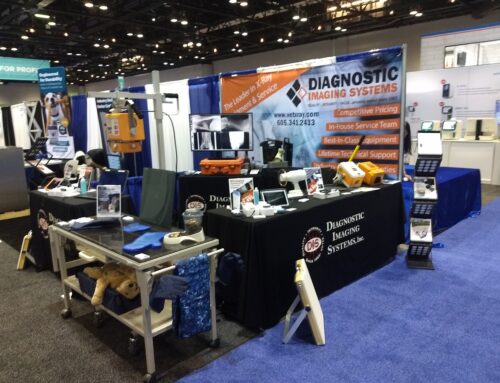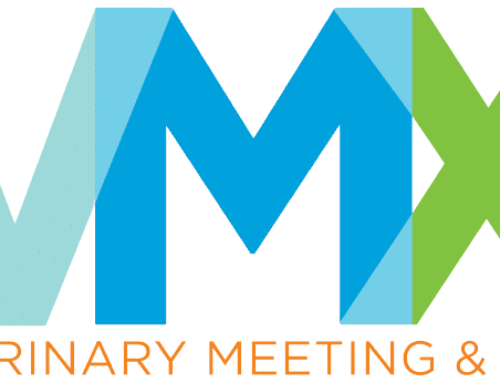When your Veterinary Hospital or
Clinic begins planning its new radiology equipment purchase it makes good sense
to evaluate the latest in mobile / portable x-ray all in one solution for your
center’s imaging department. Joe Hecker who is President of Diagnostic Imaging
Systems (DIS) and product development director for the department of imaging
services, explains that the changes in Radiology equipment usage and economics
inspired by feedback from technologists, Veterinarians and radiologists has
lead to the development of the most versatile and cost effective 3 way radiology system available.
Clinic begins planning its new radiology equipment purchase it makes good sense
to evaluate the latest in mobile / portable x-ray all in one solution for your
center’s imaging department. Joe Hecker who is President of Diagnostic Imaging
Systems (DIS) and product development director for the department of imaging
services, explains that the changes in Radiology equipment usage and economics
inspired by feedback from technologists, Veterinarians and radiologists has
lead to the development of the most versatile and cost effective 3 way radiology system available.
“There had been some Veterinarian
complaints about the present digital image equipment’s non- mobility and
subsequent quality,” says Mr. Hecker. “And from the technologists’ standpoint,
there had also been issues with lack of functionality.” To enhance the
productivity for both the Veterinarian and the technologists, Mr. Hecker and
his team of experts set out to develop a totally new self contained mobile
table digital radiology system that would address their concerns. He explains
that past experience with their stationery digital DR systems had been very
positive, but lacked the mobility necessary to make them a truly versatile
solution to the needs of the entire mixed animal facility. This lack of versatility
and image quality of the present digital system inspired the team to seek the
same functionality and image quality that the company’s Versa-View x-ray System
offered, only now offering it in digital.
complaints about the present digital image equipment’s non- mobility and
subsequent quality,” says Mr. Hecker. “And from the technologists’ standpoint,
there had also been issues with lack of functionality.” To enhance the
productivity for both the Veterinarian and the technologists, Mr. Hecker and
his team of experts set out to develop a totally new self contained mobile
table digital radiology system that would address their concerns. He explains
that past experience with their stationery digital DR systems had been very
positive, but lacked the mobility necessary to make them a truly versatile
solution to the needs of the entire mixed animal facility. This lack of versatility
and image quality of the present digital system inspired the team to seek the
same functionality and image quality that the company’s Versa-View x-ray System
offered, only now offering it in digital.
A mobile / portable DR digital
table system was essential because the mixed animal veterinary facility
includes a surgical center with operating room and a recovery room, all of
which would have to share the Versa-View Digital Navigator x-ray System. “Being
able to share the Digital Navigator between these rooms enhances clinical
efficiency while providing better patient
care,” says Mr. Hecker. “With the maneuverability, the compact size, the image
quality and the speed of processing, the new Digital Navigator would prove to
be a perfect fit for any environment”.
table system was essential because the mixed animal veterinary facility
includes a surgical center with operating room and a recovery room, all of
which would have to share the Versa-View Digital Navigator x-ray System. “Being
able to share the Digital Navigator between these rooms enhances clinical
efficiency while providing better patient
care,” says Mr. Hecker. “With the maneuverability, the compact size, the image
quality and the speed of processing, the new Digital Navigator would prove to
be a perfect fit for any environment”.
The development of the new system
would need to support the mixed animal imaging department field x-ray
capability for both small and large animal radiology. Mr. Hecker explains that
with their present stationary systems non-sharing capability, they would have
to purchase an additional digital portable system, but if they were to purchase
the new mobile Digital Navigator with its field portable capability, the
facilities Equine doctor would have a new modern replacement for its portable,
analog x-ray unit. Positive experience with the facilities Digital Navigator in
clinic led the facility to experience its portable digital field capabilities. “The
equine doctor indicated we needed to go to a Digital Navigator system because
of its fast and high quality images, plus it was the ideal single solution for
both in office and field usage and would fit in perfectly.”
would need to support the mixed animal imaging department field x-ray
capability for both small and large animal radiology. Mr. Hecker explains that
with their present stationary systems non-sharing capability, they would have
to purchase an additional digital portable system, but if they were to purchase
the new mobile Digital Navigator with its field portable capability, the
facilities Equine doctor would have a new modern replacement for its portable,
analog x-ray unit. Positive experience with the facilities Digital Navigator in
clinic led the facility to experience its portable digital field capabilities. “The
equine doctor indicated we needed to go to a Digital Navigator system because
of its fast and high quality images, plus it was the ideal single solution for
both in office and field usage and would fit in perfectly.”
In its’ in office and field implementation,
the DR Digital Navigator also aided with improving technologist workflow and
Veterinarian productivity by providing higher-quality images. “We liked the
fact that the DR Digital Navigators Ultra Hf12040’s 120kVp power settings were
higher than the competitors,” Mr. Hecker notes. “When you’re dealing with a
large breed canine or equine shoulder, it’s important to have the ability to
properly penetrate thick body parts.” Soon, the development team found a third
productivity-enhancing use for the Digital Navigators Mobile System. A special
hospital project aimed at reducing the time in the main emergency room for
report turnaround on possible fractures and foreign bodies, they again selected
the 3 way all in one Digital Navigator with integral x-ray unit mobile table
combination. Mr. Hecker explains that the decision was driven by lengthy
processing time required by the facilities regular portable x-ray system. “You
had to take the x-ray, process it, look at it, send it to the PACS, then pull
up the PACS in the OR room,” he recalls. “We realized the only way we could get
any faster was to get away from the old system.”
the DR Digital Navigator also aided with improving technologist workflow and
Veterinarian productivity by providing higher-quality images. “We liked the
fact that the DR Digital Navigators Ultra Hf12040’s 120kVp power settings were
higher than the competitors,” Mr. Hecker notes. “When you’re dealing with a
large breed canine or equine shoulder, it’s important to have the ability to
properly penetrate thick body parts.” Soon, the development team found a third
productivity-enhancing use for the Digital Navigators Mobile System. A special
hospital project aimed at reducing the time in the main emergency room for
report turnaround on possible fractures and foreign bodies, they again selected
the 3 way all in one Digital Navigator with integral x-ray unit mobile table
combination. Mr. Hecker explains that the decision was driven by lengthy
processing time required by the facilities regular portable x-ray system. “You
had to take the x-ray, process it, look at it, send it to the PACS, then pull
up the PACS in the OR room,” he recalls. “We realized the only way we could get
any faster was to get away from the old system.”
Today, Mr. Hecker says, images
are processed right on the Digital Navigator system; the physician sees the
image in the OR and can rapidly make a determination about whether a foreign
object or fracture is present. With the planned addition of wireless internet
capability in the OR, Mr. Hecker anticipates even greater increases in
productivity.
are processed right on the Digital Navigator system; the physician sees the
image in the OR and can rapidly make a determination about whether a foreign
object or fracture is present. With the planned addition of wireless internet
capability in the OR, Mr. Hecker anticipates even greater increases in
productivity.
“The Veterinarians, technologists
and referring physicians will be quite happy with the increased productivity
gained from the new Digital Navigator 3 Way System,” he concludes.
and referring physicians will be quite happy with the increased productivity
gained from the new Digital Navigator 3 Way System,” he concludes.






